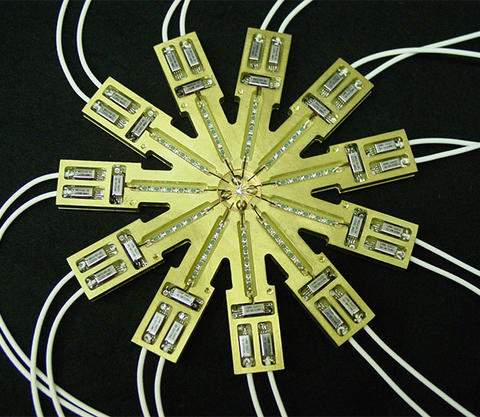Current and Voltage

To make high-tech products from cellphones to pacemakers, the microelectronics industry depends greatly upon authoritative standards for both DC voltage and AC voltage and frequency, as well as measurements of electric current in increasingly tiny devices.
The values of voltage and current in electric and magnetic systems are predicted so accurately by quantum theory and verified so reliably in experiments that they can provide the basis of exact reference standards for use in industry, defense and science.
Volts are already measured to high accuracy and are so thoroughly familiar that they might seem unlikely subjects for NIST on a Chip. However, NOAC projects are underway with critical significance for both units. They shrink the measurement technology further, enable the devices to operate at higher temperatures, automate more functions for easier operations, and last but not least, work at higher frequencies that communications and other technologies demand.
At the same time, another NIST team is developing devices and measurement methods to satisfy the requirements of the new definition of the ampere (the unit of electric current), which is part of the overall redefinition of the International System of Units (SI) that went into effect worldwide on May 20, 2019.
Click on the boxes below to explore the technology in more detail.
Quantum Ampere Standard Programmable Josephson Voltage Standards and Arbitrary Waveform Synthesizers

